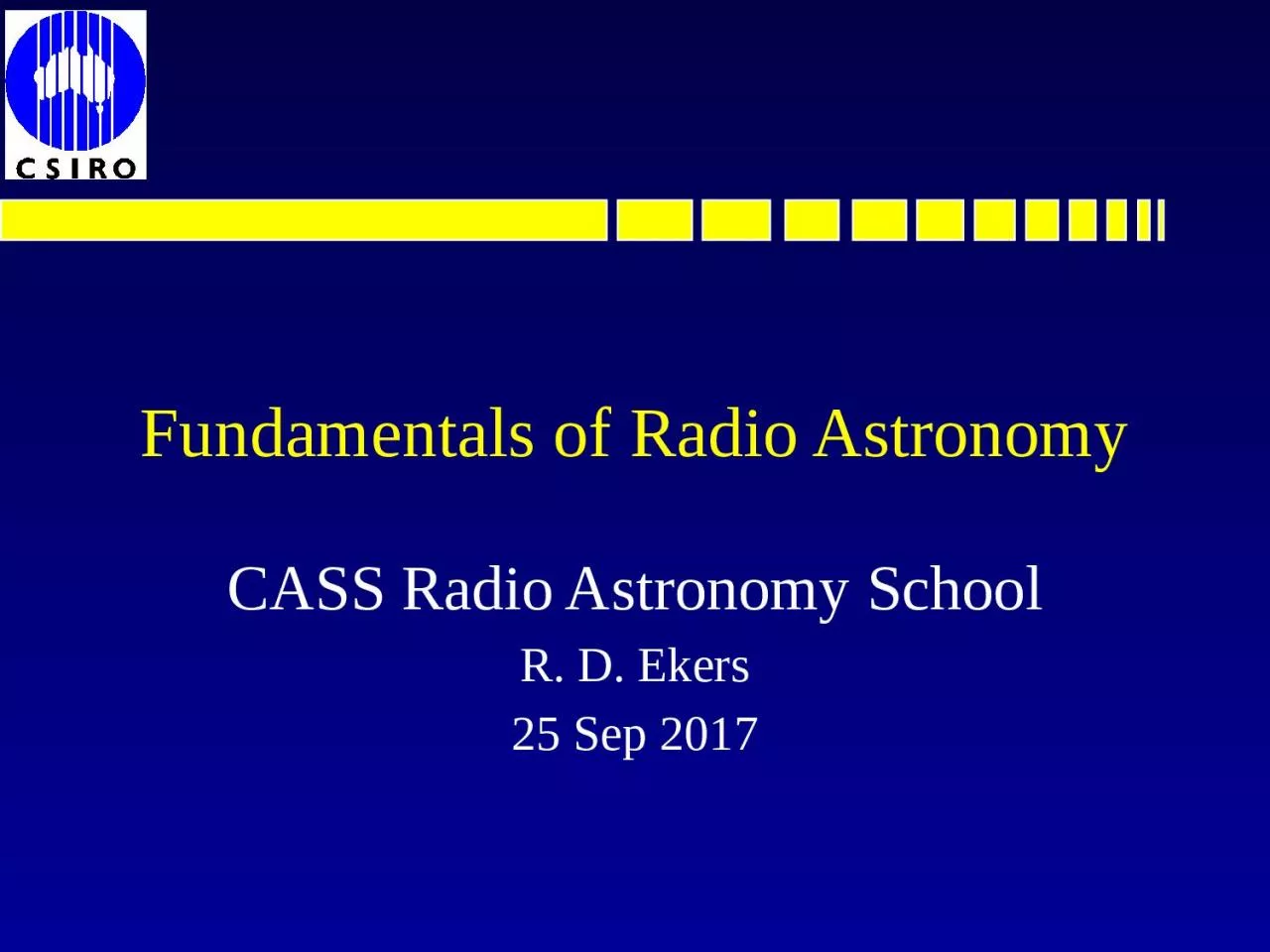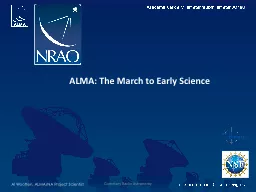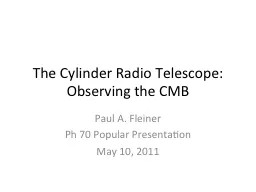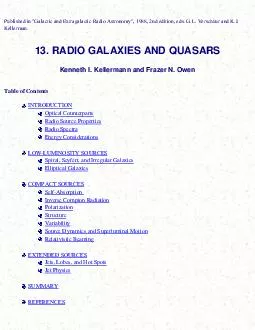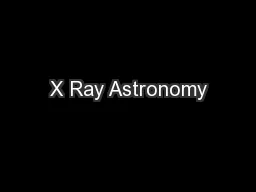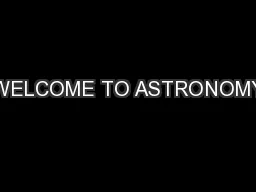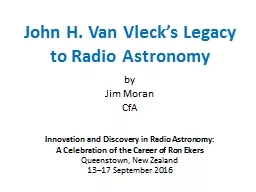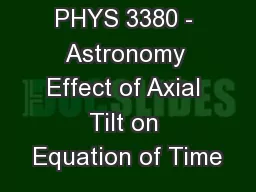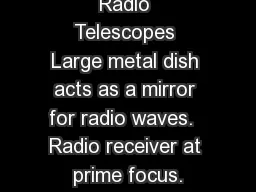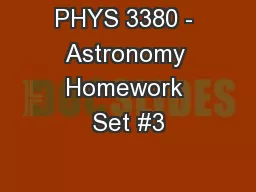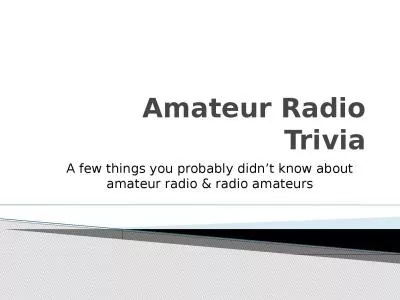PPT-Fundamentals of Radio Astronomy
Author : beatrice | Published Date : 2024-02-03
CASS Radio Astronomy School R D Ekers 25 Sep 2017 25 Sep 2017 R D Ekers 2 WHY National Facilities Easy for nonexperts to use dont know what you are doing Cross
Presentation Embed Code
Download Presentation
Download Presentation The PPT/PDF document "Fundamentals of Radio Astronomy" is the property of its rightful owner. Permission is granted to download and print the materials on this website for personal, non-commercial use only, and to display it on your personal computer provided you do not modify the materials and that you retain all copyright notices contained in the materials. By downloading content from our website, you accept the terms of this agreement.
Fundamentals of Radio Astronomy: Transcript
Download Rules Of Document
"Fundamentals of Radio Astronomy"The content belongs to its owner. You may download and print it for personal use, without modification, and keep all copyright notices. By downloading, you agree to these terms.
Related Documents

